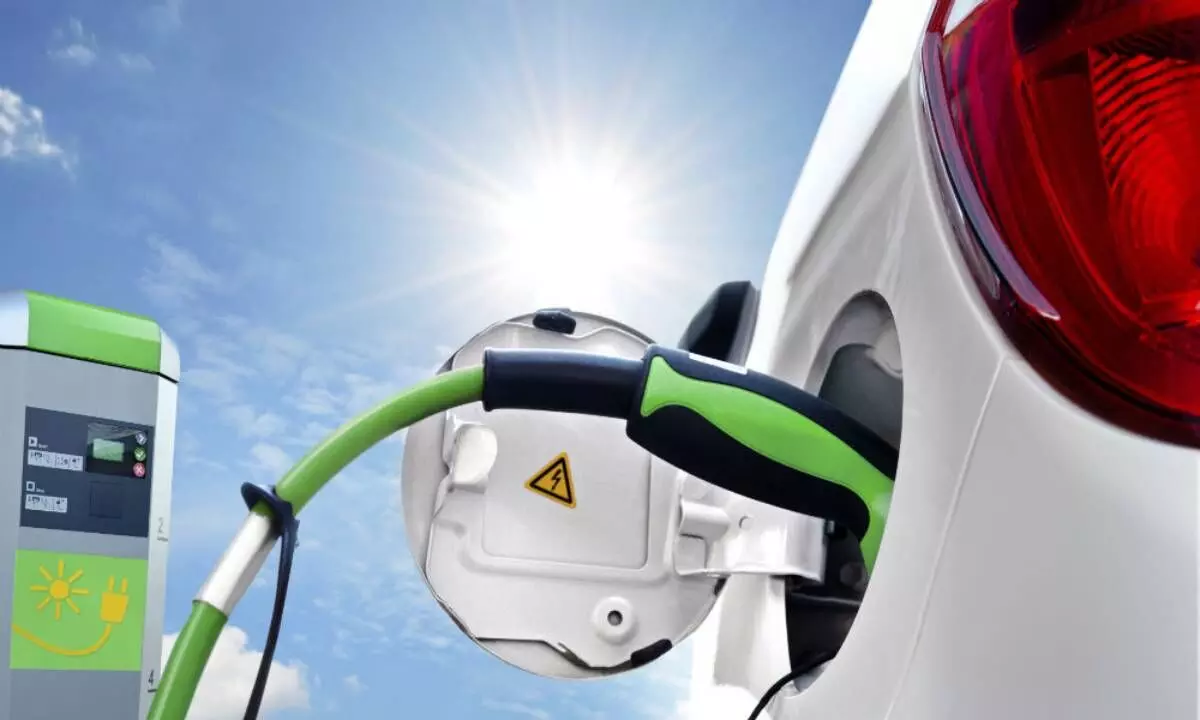Despite price rise, EVs will continue to enjoy lesser operating costs: Experts
The subsidy under FAME- II scheme has been slashed from Rs 15,000 per kWh to Rs 10,000 per kWh. The maximum subsidy cap has also been lowered from 40% to 15%
image for illustrative purpose

Even after the increase in price, EVs will continue to result in lesser operating costs, feel the industry stakeholders.
The announcement of rolling back subsidies available under phase-II of the Faster Adoption and Manufacturing of Electric Vehicles (FAME) doesn't bode well for the individual consumer who’s on the fence and assessing the benefits of EVs and electric mobility against their costs of adoption. There will be some pushback from that B2C segment especially given high price sensitivity.
Talking to Bizz Buzz, Gaurav Rathore, Co-Founder, EVeez, said, “For the high daily use segment, primarily B2B, even after the increase in price, EVs will continue to result in lesser operating costs. However, the upfront cost of buying the EV will be significantly higher, thereby making it difficult for such businesses to own EVs. Newer business models will have to support this transition and solve for these problems. I also believe that this impact will be short term, with the EV ecosystem adapting faster to new realities and improving the product and pricing with increasing scale.”
OEMs have to significantly improve the quality of the product offerings to justify the pricing. At the same time, they will have to unlock synergies in the supply chain to reduce their input cost. Newer business models will proliferate further to solve for the high upfront cost for an EV. Electric mobility as a service (eMaaS), battery swapping, battery as a service (BaaS) and similar such models are bound to gain traction and larger market share. In addition to solving for the high upfront costs, these new age offerings also de-risk EV ownership and maintenance, he said.
In a recent development, the government has made revisions to the Faster Adoption and Manufacturing of (Hybrid) Electric Vehicles in India (FAME India) scheme, bringing about changes that will impact the electric vehicle (EV) market, specifically the electric two-wheeler segment. The Ministry of Heavy Industries has announced a reduction in the subsidy provided under the FAME India Phase-II scheme for electric two-wheelers, leading buyers to brace themselves for an impending price hike. Under the revised scheme, the subsidy on electric two-wheelers has been slashed from Rs 15,000 per kWh to Rs 10,000 per kWh. Furthermore, the maximum subsidy cap has been lowered from 40 per cent to 15 per cent. These modifications have been in effect from June 1, 2023, and will apply to all electric two-wheelers registered on or after this date.
This change comes at a time when the sales of electric two-wheelers have been experiencing a decline since their peak in March, with sales figures dropping to around 39,000 units in May.
To navigate these changes and stay competitive in the market, leading electric two-wheeler manufacturers are likely to re-evaluate their product portfolios. They may introduce lower-spec variants and trims by reducing battery sizes and features, all in an effort to offset the impact of reduced subsidies. As the industry adjusts to these revisions, the goal remains to make EVs more accessible and affordable to a wider consumer base. The FAME India scheme, initiated in April 2019 and implemented in October of the same year, aims to reduce the upfront costs of EVs, making them more price-competitive with internal combustion engine (ICE) vehicles. By bridging the price gap between EVs and traditional vehicles, the scheme encourages the widespread adoption of electric mobility.
In addition to the changes in the FAME India scheme, the Federation of Automobile Dealers Associations (FADA), the apex body of the Indian automobile retail industry, has urged the GST Council for a reduction in the Goods and Services Tax (GST) rate on two-wheelers. FADA emphasizes that two-wheelers should not be categorized as sin goods or luxury items for GST taxation purposes. They argue that reducing the GST rate from the current 28 per cent to 18 per cent will make two-wheelers more affordable and help revitalize demand in the industry.
Tushar Chhabhaya, Director of Aarya Automobiles, expressed confidence in the launch of their latest electric bike, the Aarya Commander, despite the reduced subsidies under the FAME scheme.
He said, “The impact of the lower subsidy on the FAME scheme does present challenges, but we remain committed to our customers. We believe in the potential of electric mobility and want to make it accessible to all. Therefore, we have decided not to raise price of the Arya Commander much, ensuring that our customers can still experience the thrill of this remarkable bike without any additional financial burden. We are determined to redefine the electric bike segment in India and contribute to a sustainable future of transportation."
FADA's president highlights that such a reduction in GST will not only make two-wheelers more accessible to the common man but also generate employment opportunities and contribute to India's overall economic growth. As the Indian government takes steps to revise and refine its policies, the future of electric mobility in the country hangs in the balance. The adjustments made to the FAME India scheme and the potential reduction in GST rates are significant factors that will shape the growth trajectory of the EV market. With concerted efforts from all stakeholders, India can pave the way for a sustainable and eco-friendly transportation landscape, reducing dependence on fossil fuels and embracing the power of electric vehicles.

